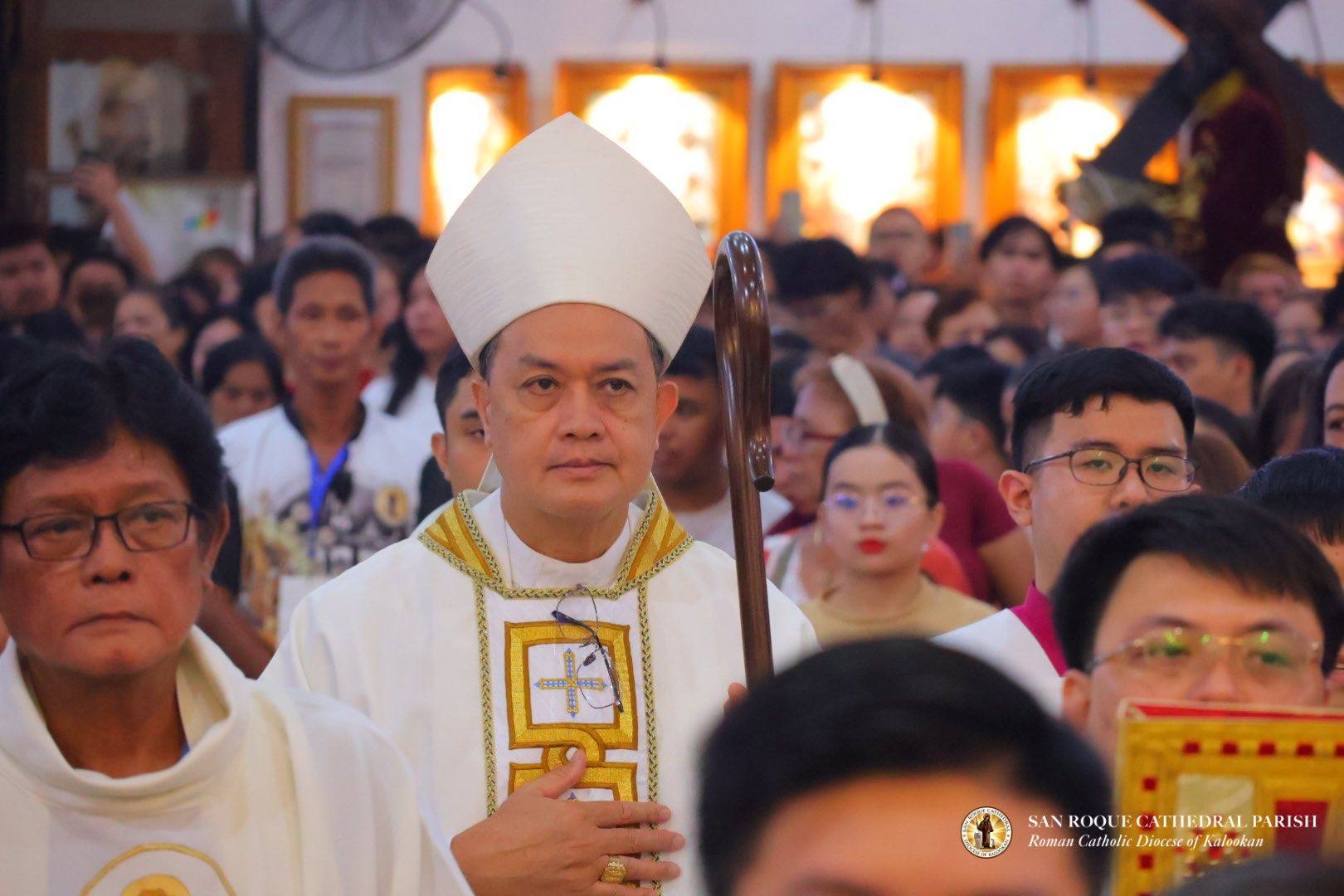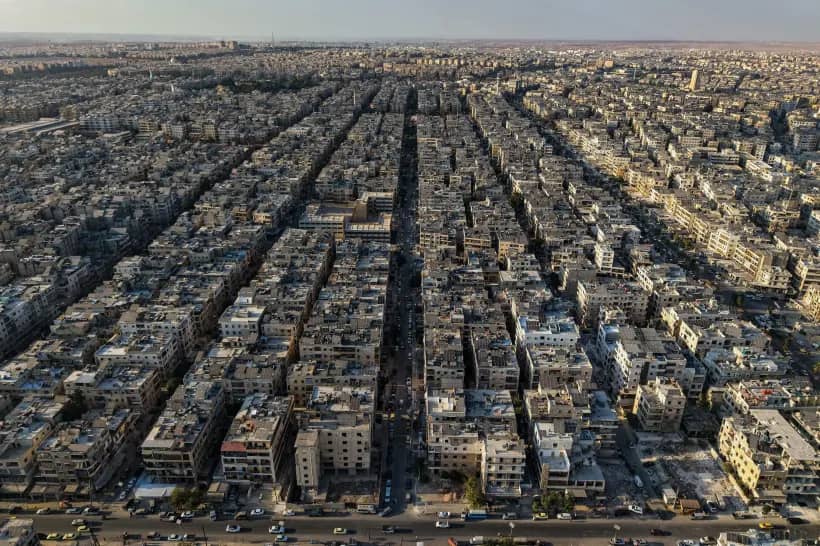SALAMANCA, Spain — When Kent Albright, a Baptist pastor from the United States, arrived as a missionary to Spain in 1996, he was unprepared for the insults and threats, or the fines from the police for handing out Protestant leaflets on the streets of Salamanca.
“Social animosity was big — they had never seen a Protestant in their life,” said Albright, recalling one woman who whispered, “Be thankful we don’t throw stones at you.”
He couldn’t have imagined that 25 years later, he would be pastoring an evangelical congregation of 120 and count about two dozen other thriving Protestant churches in the northwestern city. And there’s a distinctive feature to the worshippers: Most of them are not Spanish-born — they’re immigrants from Latin America, including about 80 percent of Albright’s congregation.
The numbers reflect huge surges in Spain’s migrant population and evangelical population in recent decades, producing profound changes in how faith is practiced in a country long dominated by the Catholic Church.
“The Bible says there are no ethnicities, there are no races. I don’t go down the street asking, nor do I ask for passports at the church door.” Albright said. He marvels that in a course he teaches for deacons, his six students include one each from Peru, Venezuela, Colombia and Ecuador.
One of the newest members of his congregation is Luis Perozo, 31, a former police officer from Maracaibo, Venezuela who arrived in Spain in February 2020 and applied for asylum with his wife, Narbic Escalante, 35.
While the couple wait for their status to be resolved, Perozo works in the laundry of a hotel. His wife does nursing in a retirement home.
“I was a lifelong Catholic,” says Escalante. “When I arrived in Salamanca, I entered the church, looked everywhere, said hello, and they ignored me. I went to several churches — I felt absolutely nothing.”
Perozo and Escalante soon visited Albright´s church — one of Perozo´s uncles had emigrated earlier and was already a member.
“The next day, Pastor Albright was helping us find a house, appliances and kitchenware. He moved us with his van,” Escalante said.
She commended Albright’s approach to pastoring, including services with lively music and less emphasis on repetitive prayer.
“I definitely feel better here than in the Catholic Church,” she says. “It allows me to live more freely, with less inhibitions.”
Before she and her husband were baptized at Albright’s church, she visited a Catholic priest. She recalls him responding, “If it makes you feel at peace with yourself, go. You’re not committing any sin.”
Albright sees similar reactions among other Latin American immigrants.
When they go to a Catholic church, he says, “they don’t feel that their problems are understood.”
“Latinos generally have a desire to participate in worship,” he added. “They need to have an active part in the celebration. The Catholic Church feels static to them.”
With the arrival of the euro currency two decades ago, Spain experienced an economic boom that fueled migration. In 2000, there were 471,465 legally registered migrants in Spain; there are now about 7.2 million.
Albright was so intrigued by this phenomenon that he wrote a Ph.D. thesis about it at the University of Salamanca. He estimated that 20 percent of the migrants are evangelicals.
The last official census conducted by the Justice Ministry’s Observatory of Religious Pluralism found 1.96 percent of Spain’s population was Protestant in 2018 — more than 900,000 people. That’s up from 96,000 tallied in 1998.
The steady growth of the Protestant population coincides with a steady drop in the number of churchgoing Catholics. According to the Sociological Research Center, a public institute, 62 percent of Spaniards define themselves as Catholics, down from 85 percent in 2000 and 98 percent in 1975. Only about a third of those Catholics say they’re actively practicing the faith.
It’s a striking development in a country where Catholicism, for centuries, was identified with near-absolute power — from the long, often brutal era of the Spanish Inquisition to the 36-year dictatorship of Gen. Francisco Franco, who called his regime National-Catholic, in the 20th century.
Of the 23,000 Catholic parishes in Spain at present, more than 6,000 have no full-time priest. Some churches had to close when a priest died or retired, or be grouped together with other churches served by traveling priests who minister to multiple parishes.
The church’s challenges are evident in the province of Zamora, just north of Salamanca, which has lost 16 percent of its population since 2000. There are 304 parishes and only about 130 priests serving them.
One of the traveling priests, the Rev. Francisco Ortega, manages six parishes — trying to adapt as the number of churchgoers steadily declines. At age 40, he has been active on YouTube since the pandemic began, and is now back on the streets trying to stay up to date with his parishioners.
It’s a hectic agenda, but Ortega recently received some help — Rev. Edgardo Rivera, a 42-year-old missionary from El Salvador, joined him in November. It’s a reversal of the pattern several centuries ago, when hundreds of Catholic missionaries embarked for Latin America from Spain.
“Now it is the other way around,” Rivera said. “I saw the need for priests in Spain and I thought of offering myself. I never liked easy things.”
Overall, about 10 percent of the Catholic priests now serving in Spain were born elsewhere. The influx is welcome, given that the average age for a priest in Spain today is about 65.
How is it difficult for Rivera? “I am a missionary priest announcing the Gospel in a place that is not my culture,” he said. “I have to learn.”
He and Ortega strive to be good teammates. While Ortega blessed parishioners during one recent celebration, Rivera managed the church’s sound system via Bluetooth and changed the music tracks and volume from his phone.
They’ve both gone dancing with some residents of Morales del Vino, a small town where Ortega is the parish priest, winning praise from one of the revelers, 23-year-old lawyer Juan Manuel Pedrón.
“If the church wants to support us it has to be normal, it has to be with us, with the young people and do what we do,” Pedrón says.
His girlfriend, Tania Rey, 27, was on her first visit to Morales del Vino.
“In my town, the priest circulates with old ladies,” she said. “I am very shocked to see these two priests like this.”
She and Pedrón teased Rivera, saying he dances better than they do.
The next day, after Sunday Mass, Rivera organized a gathering at the community center where he officiated. The official church building, 300 years old, is falling down.
“The walls of the church are giving way inward, the roof is in danger. We need to see what the strategy is for repair,” he says, explaining that gifts from parishioners will be needed to supplement the diocese’s repair budget.
The group then heads to the village bar; Rivera orders a glass of chilled white wine and sits with some of the parishioners.
His challenges are varied, he says. “I have to see how to ask for help to repair the church … and get used to coming to the bar.”
He couldn’t imagine drinking a beer at a bar in his Salvadoran hometown after Mass. “But if this is where people gather and how people socialize here, this is where I have to be too.”
But the momentum — in terms of church attendance and energy — is going in the other direction, toward the burgeoning ranks of Pentecostal and other evangelical congregations.
Many of those congregations rent space in industrial buildings on the outskirts of cities and towns — often filling them with zealous worshippers even as many large, centuries-old Catholic churches empty out.
One such Pentecostal venue in Salamanca has as neighbors a large carpentry shop and another evangelical church. On a recent Friday night, it hosted a rite of passage for Melanie Villalobos to celebrate her turning 13.
Two of her friends escorted her in a slow dance to a wall where a video was projected. There, her father appeared from Venezuela, wishing her a happy transition into adolescence. Onlookers from Honduras, the Dominican Republic and Brazil, seated at tables, were moved to tears.
Pastor Nedyt Lescano, 62, who came from Argentina in 2000, was mostly silent during the ceremony, but invited everyone to meet again Sunday morning.
Among those greeting the faithful was Roberto Siqueira, 32, a Brazilian who works in a cheese factory on the outskirts of Salamanca. On Sundays, he plays guitar and sings in a Christian rock band that performs dance-inducing songs in the Pentecostal church.
“This life is worth very little and the relationship with God is worth everything,” goes one of the lyrics.
It’s a bit like karaoke. The lyrics are projected on the wall, people sing along, gesturing and gyrating to the rhythm. Some seem in a trance, others cry out with emotion.
About 50 people are on hand, trying to comply with coronavirus social-distancing restrictions.
Lescano doesn’t say much during the ceremony, letting the worshippers testify about challenges they faced and prayers that were answered.
In Lescano’s services, there’s a moving moment when she asks for help in paying the rent for the premises, along with other expenses, and the faithful, one by one, put an envelope in a cloth bag.
“Unlike the Catholic Church, we don’t receive any subsidies. We do it all by our own efforts here,” Lescano says.
Indeed, Spain’s Catholic Church — though no longer recognized as the official national faith — received 301 million euros (about $340 million) in 2020 under an agreement with the government. Spain’s evangelicals — though now accounting for more than 4,500 registered places of worship — received a symbolic 462,000 euros (about $523,000).
Lescano often feels like a psychologist, as well as a pastor, for those flocking to the makeshift church.
“Immigrants feel lonely and isolated, in a strange country, and here they receive love and hugs,” she said. “Here they come and share, take pounds of weight and anxiety off their bodies and minds.”















